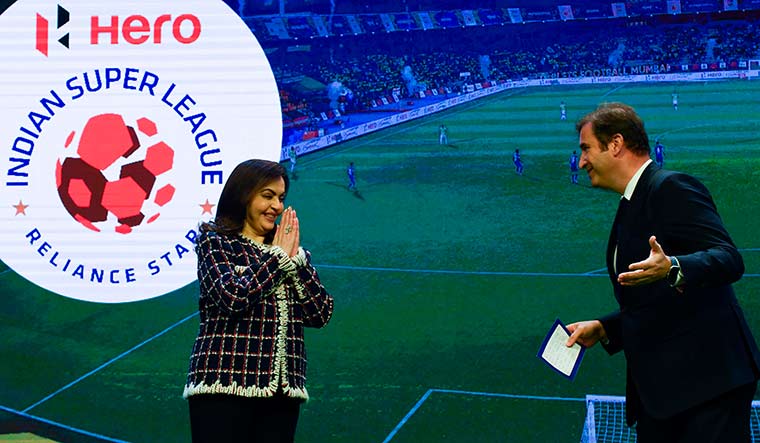ON SEPTEMBER 1, 2008, the Abu Dhabi United Group (ADUG) took over English Premier League club Manchester City FC. A few hours later, the club set a British transfer record by signing Robinho for £32.5 million from Spanish giants Real Madrid. It was a slap in the face for Chelsea FC, which had publicly pursued the Brazilian all summer. Chelsea had won the Premier League twice in the previous four seasons (2004/2005-2007/2008), whereas City had finished eighth, 15th, 14th and ninth in the 20-team league. Robinho’s signing by City created ripples around the football world.
Fast-forward 11 years, and City has added four league championships, two FA Cups and four League Cups to its trophy cabinet. It is the most successful English team of the decade. And this is the best spell in the 139-year history of the club which has its roots in the football team started by St. Mark’s Church, West Gorton, as part of a drive to tackle alcoholism and gang violence. In 2013, ADUG, owned by Abu Dhabi royal Shiekh Mansour bin Zayed Al Nahyan, established the City Football Group (CFG) to promote its business interests in football. Today, CFG, valued at $4.8 billion, is the most valuable football group in the world.
On November 28, it announced the acquisition of a 65 per cent stake in the Indian Super League (ISL) team Mumbai City FC. Ferran Soriano, CEO, CFG, said that the group’s aim was to unleash the power of Indian football. Nita Ambani, chairperson of Football Sports Development Ltd (FSDL), which runs the ISL, said that the deal was an endorsement of the increasing appeal of Indian football. Indeed, there has been an increasing interest in Indian football from foreign clubs, including eight-time German champions Borussia Dortmund, thanks to the potential of the Indian market.
Rumours of CFG being interested in taking over an ISL club had been doing the rounds for a year. At first, it was said they were looking at Kerala Blasters FC because of its fan base. But, Kochi, or, any other Indian city, does not match up to the Maximum City. A team in India’s financial capital is a nice addition to CFG’s portfolio of owned and operated clubs—Manchester City, New York City FC and Melbourne City FC. The group has also invested in Girona FC, Spain; Yokohama F. Marinos, Japan; Club Atletico Torque, Uruguay; and Sichuan Jiuniu, China. All these clubs have benefited from CFG’s inputs in training, medical care and sports science, not to mention funds. Atletico Torque won promotion to the Uruguayan top division for the first time, within 12 months of CFG’s investment.
In England, CFG has not only made Manchester City serial winners, but has overseen the development of a sustainable model, including a youth system that has produced the likes of Phil Foden and Jadon Sancho, and world-class infrastructure. This is what India needs most from the group. Former India captain I.M. Vijayan said that such a big group’s entry would definitely help Indian football. “Especially if we are able to make use of their youth programmes,” he said. Vijayan, it is often said, would have scaled greater heights had he been born in a country with a good football ecosystem. He said that it was vital that India took advantage of CFG’s know-how and scientific approach. “They know very well about factors like diet and fitness and this knowledge is needed in India. It will help our children become better players.” Mumbai City CEO Indranil Blah said: “The CFG youth programme is among the best in the world and we cannot wait to implement their ideas. In terms of infrastructure development, Mumbai has its own challenges when it comes to space and real-estate costs. We will plan our course of action post a detailed feasibility study of the existing football infrastructure.”
Money is going to be key. Manchester City has been criticised, mostly by disgruntled fans of traditionally bigger teams, for “buying success”. But, merely having money is not enough. Spending it smartly is vital. Mumbai City needs funds. But it also has to depart from the ISL’s transfer standards—signing big names past their prime. “It is in our interest that funds are used judiciously and for the right reasons,” Indranil told THE WEEK. “One need not have marquee players in the ISL to perform well both on and off the field. Getting a marquee player into the ISL needs to make RoI sense, which as of now, it does not.”
Another major positive for Mumbai is the option of bringing players in on loan from the other clubs in the group. While it would be unrealistic to expect the likes of Foden to come to India, deals for players from Atletico, Melbourne, Yokohama, New York and even Girona are plausible. But, most important will be an attacking style of play, which CFG advertises. That, above all, will help to win fans and build a lasting legacy. CFG has brought much-needed foreign funds to Indian football. It can also be an example of how to run a football club, something Indian owners, barring notable exceptions such as the management of Bengaluru FC, need to learn fast. But CFG’s biggest impact may be expediting investments from other investors.


